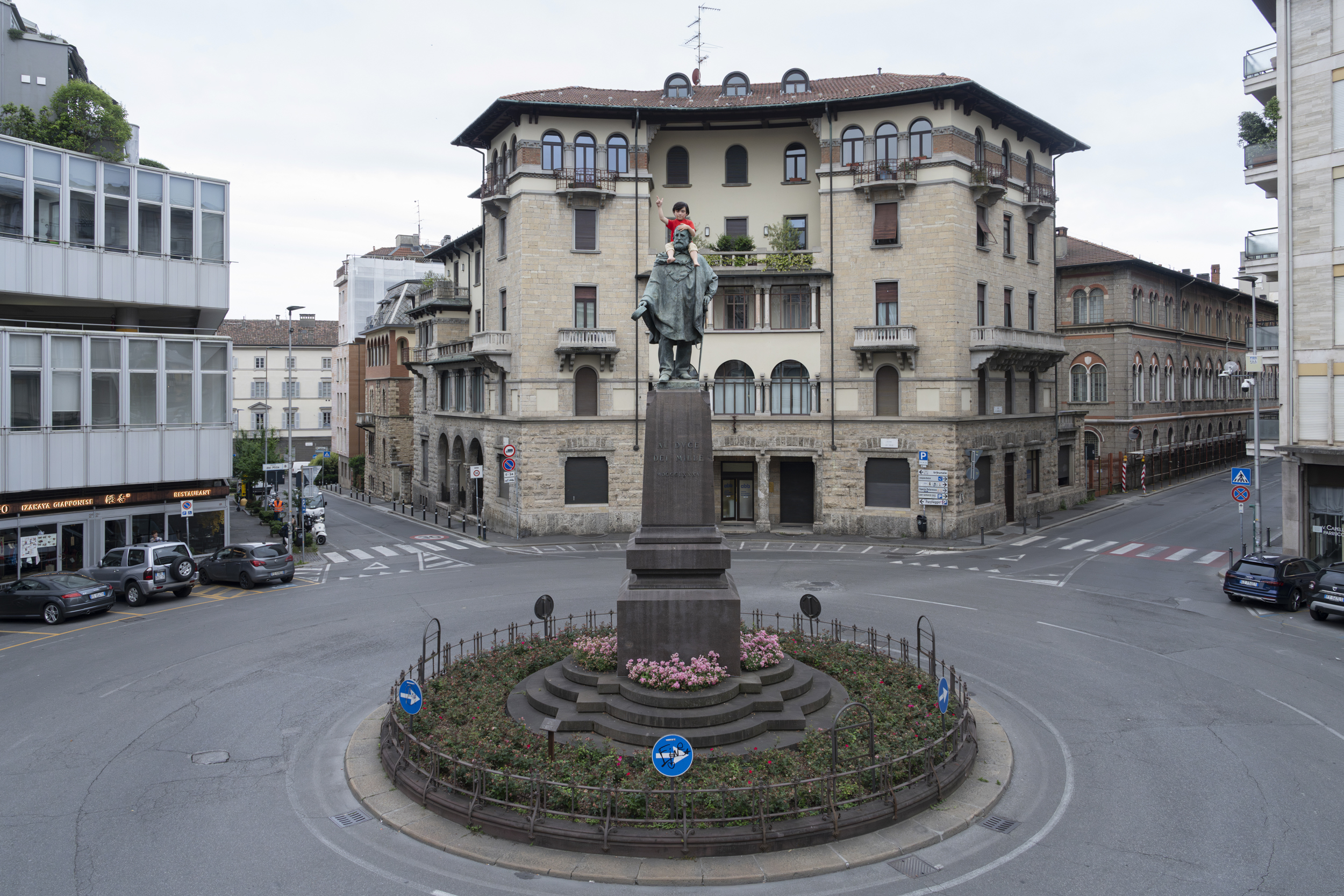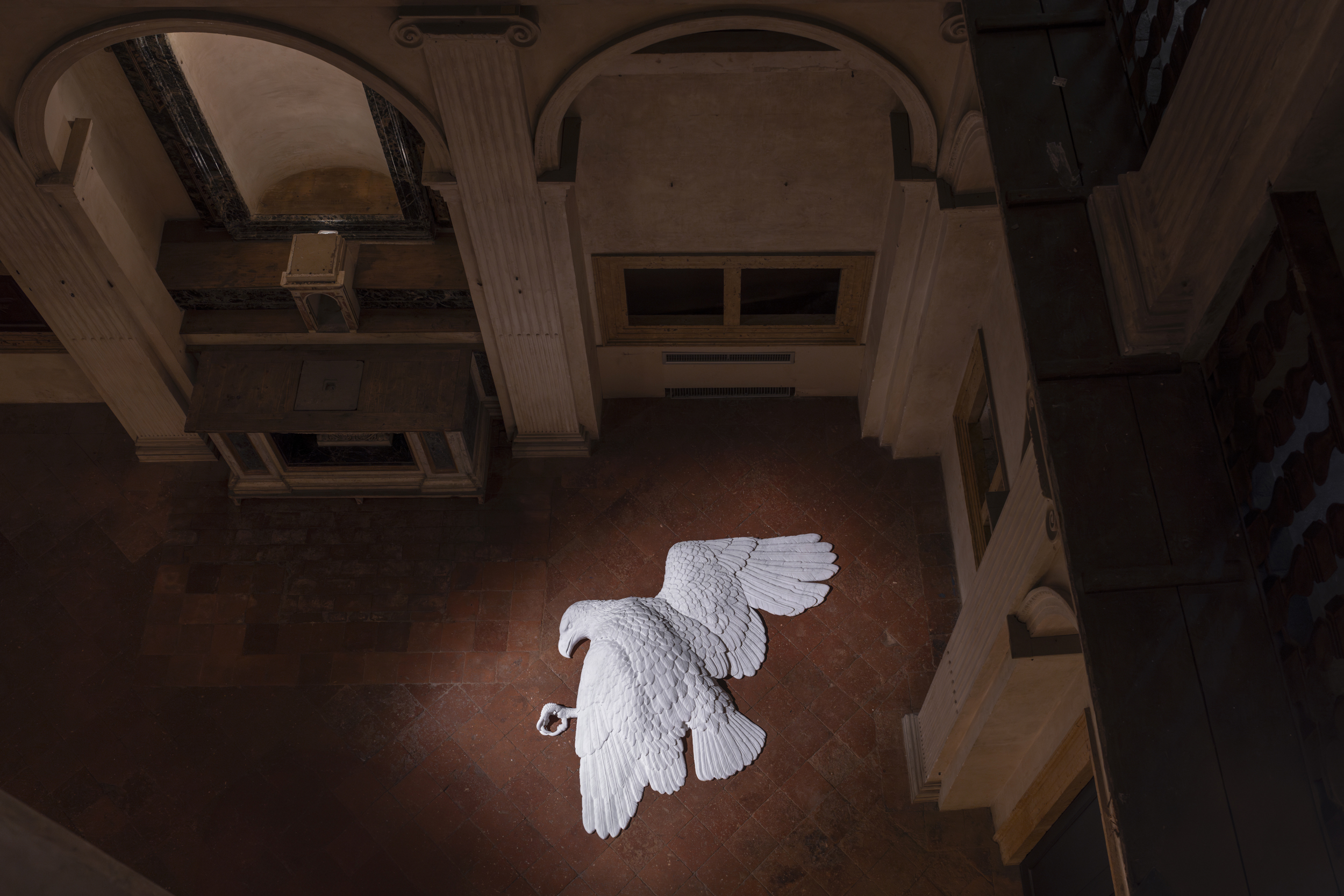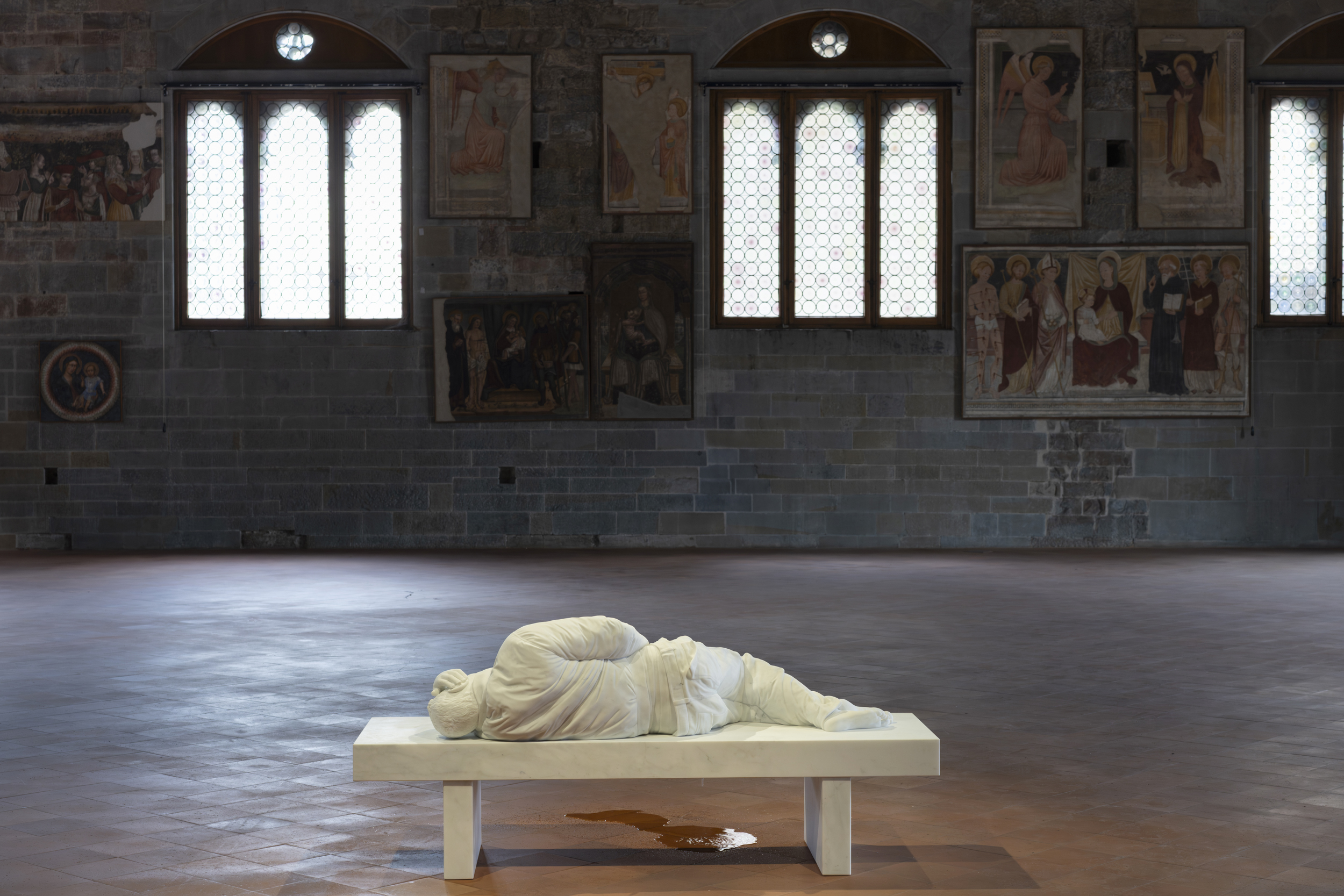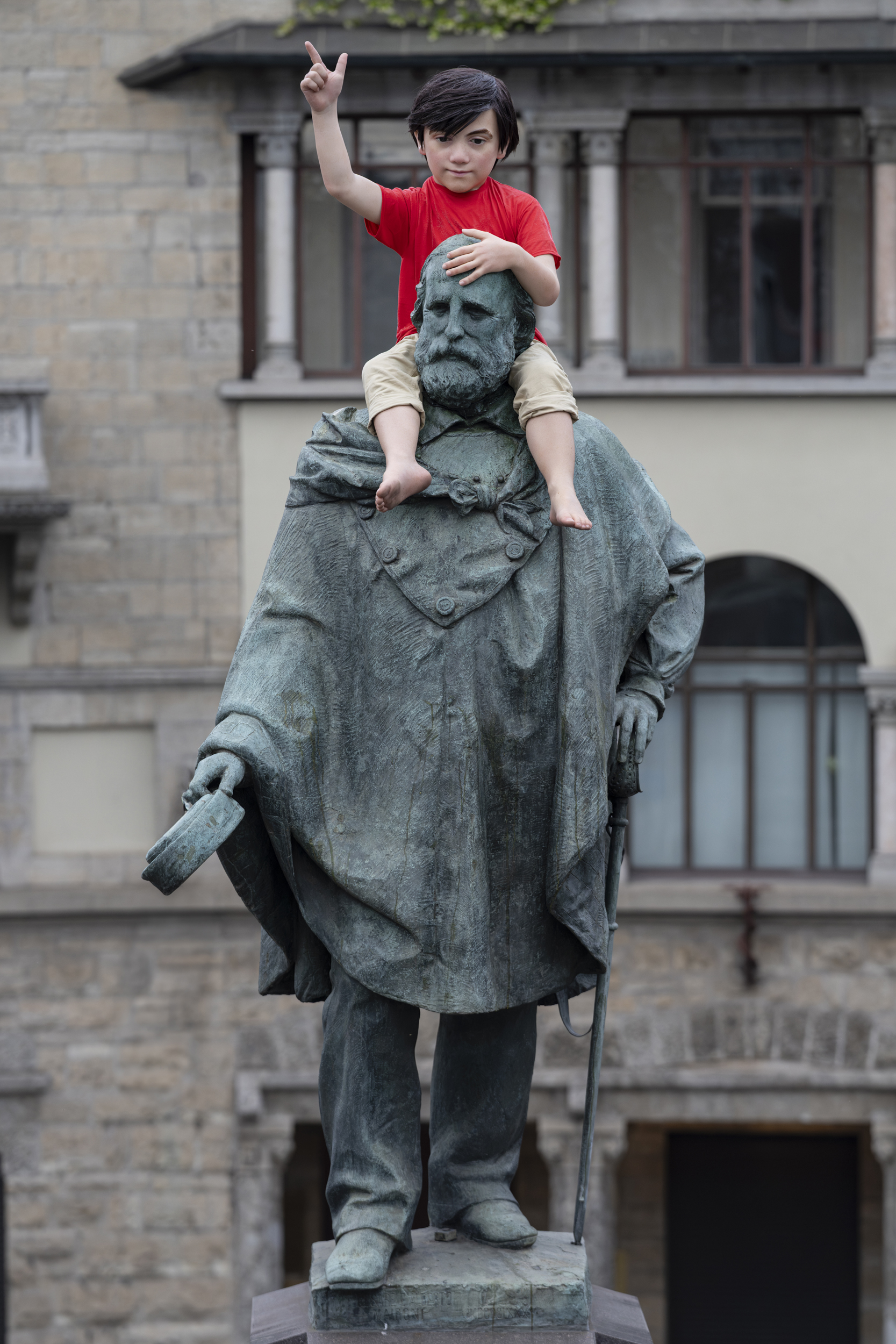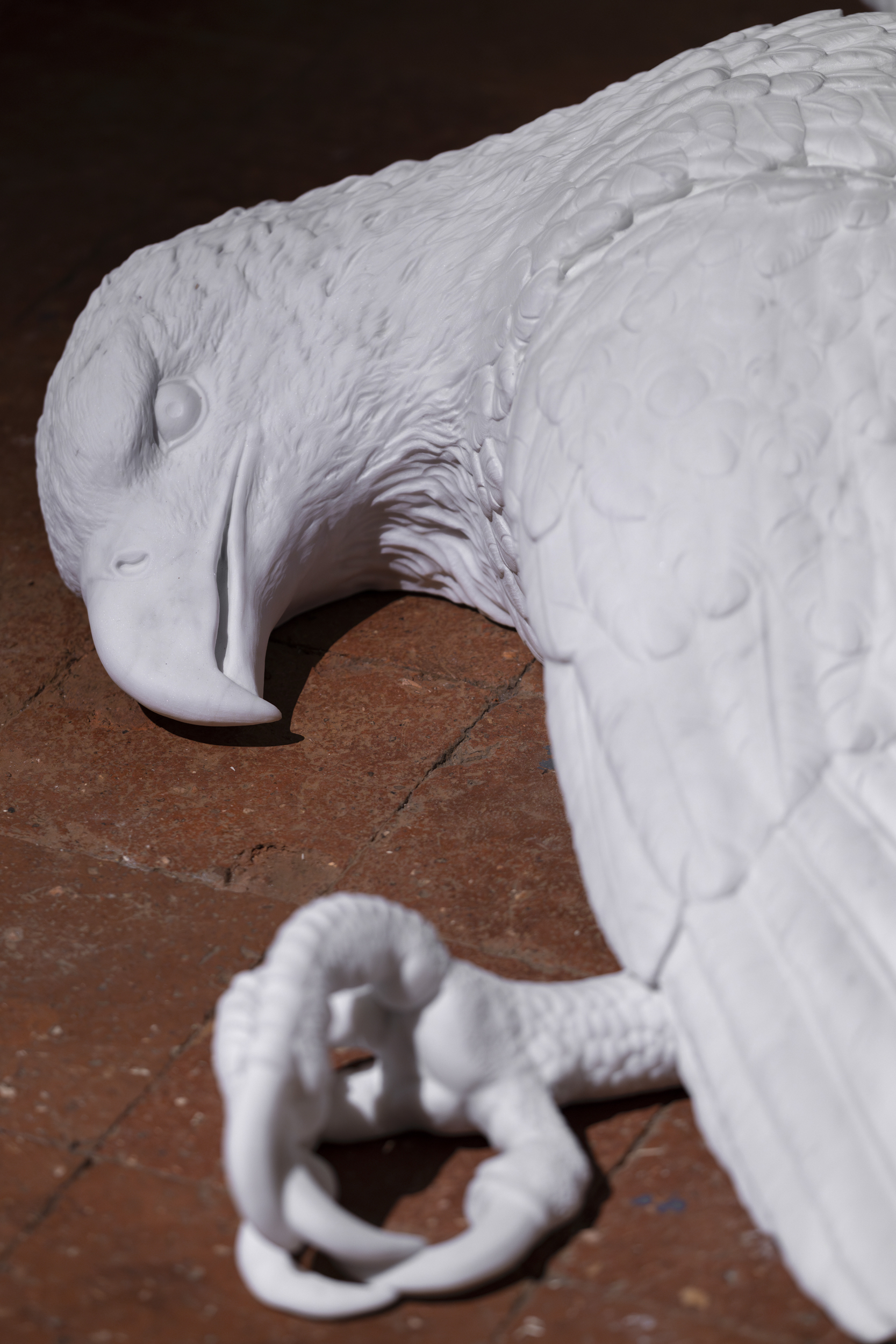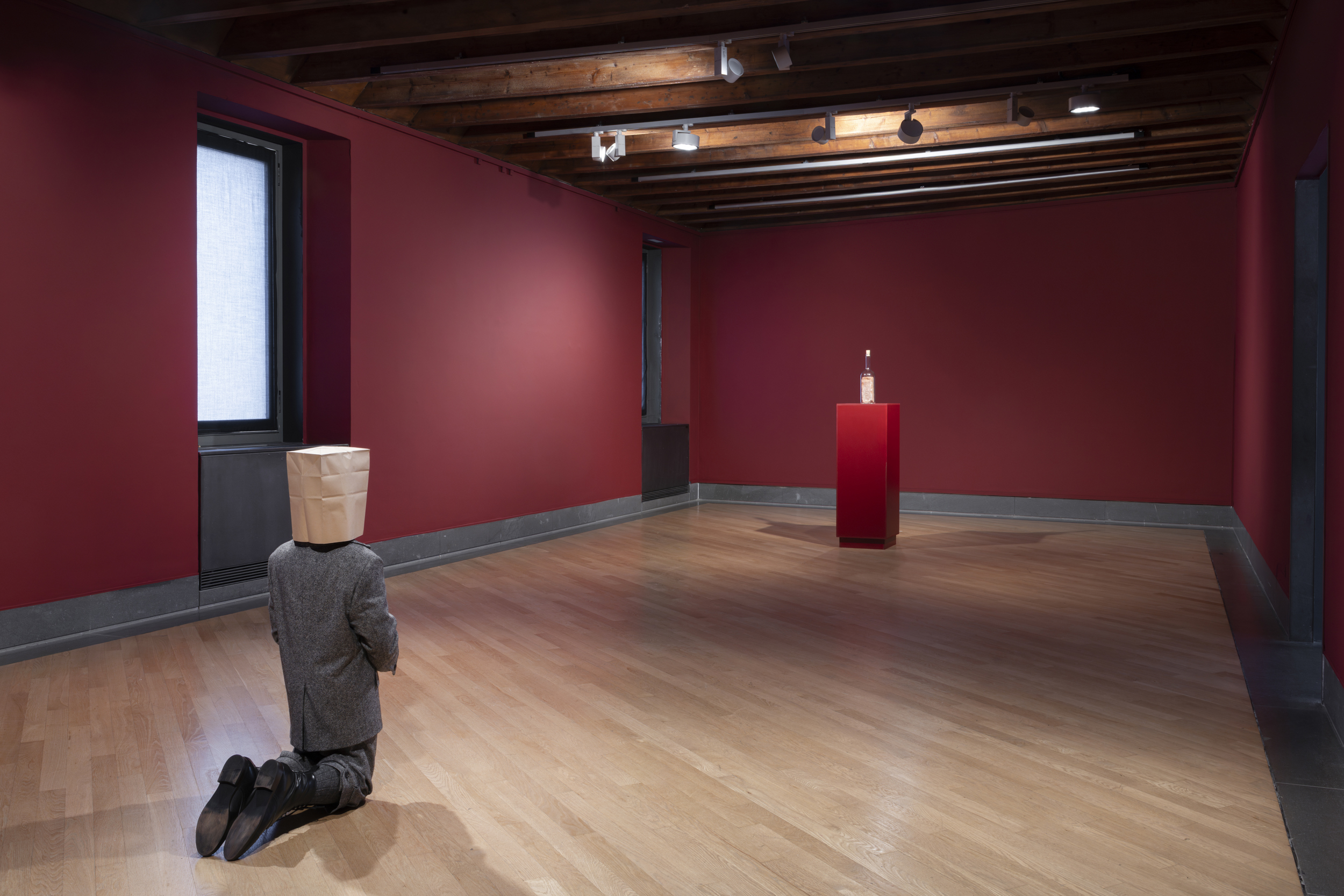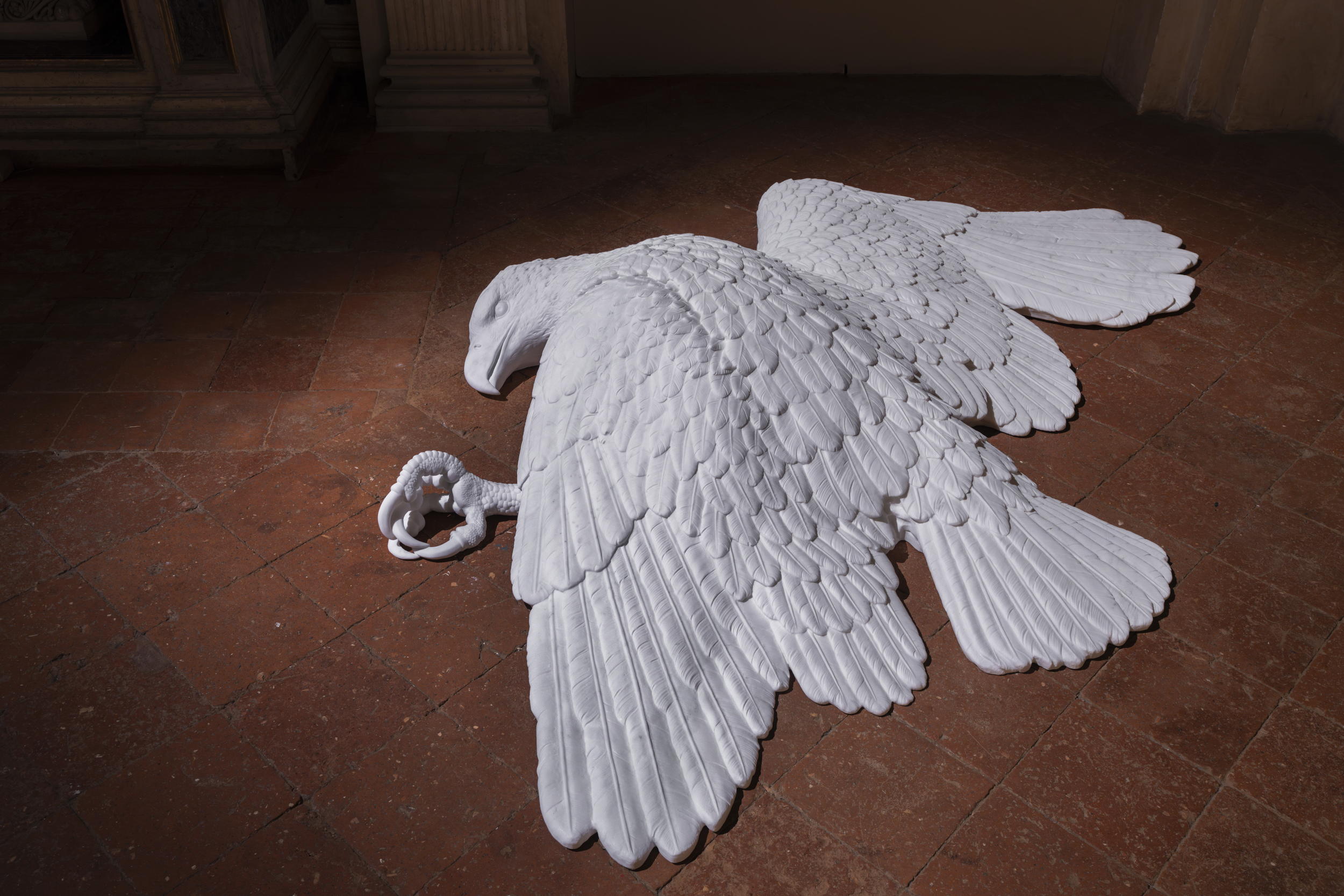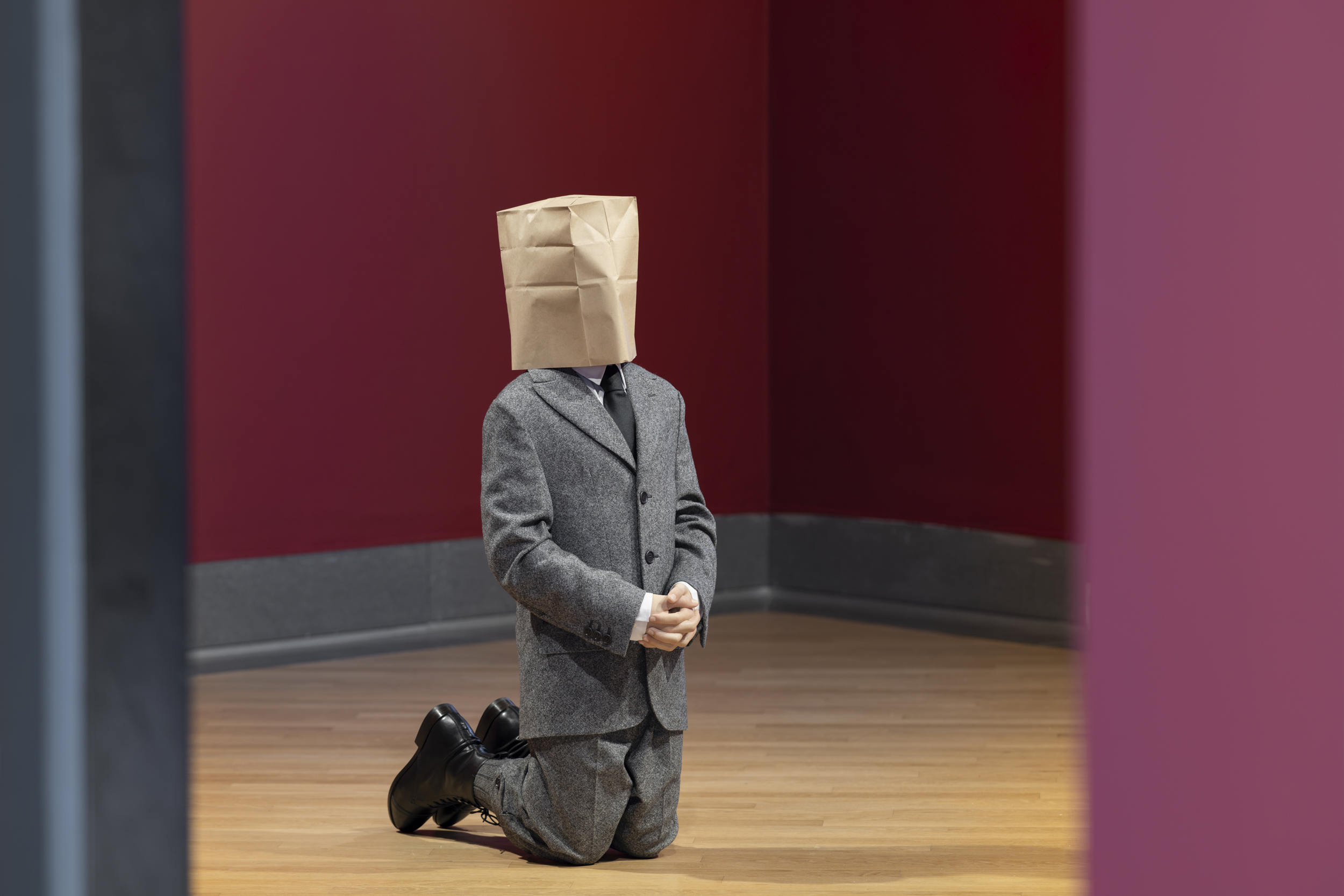Maurizio Cattelan. Seasons
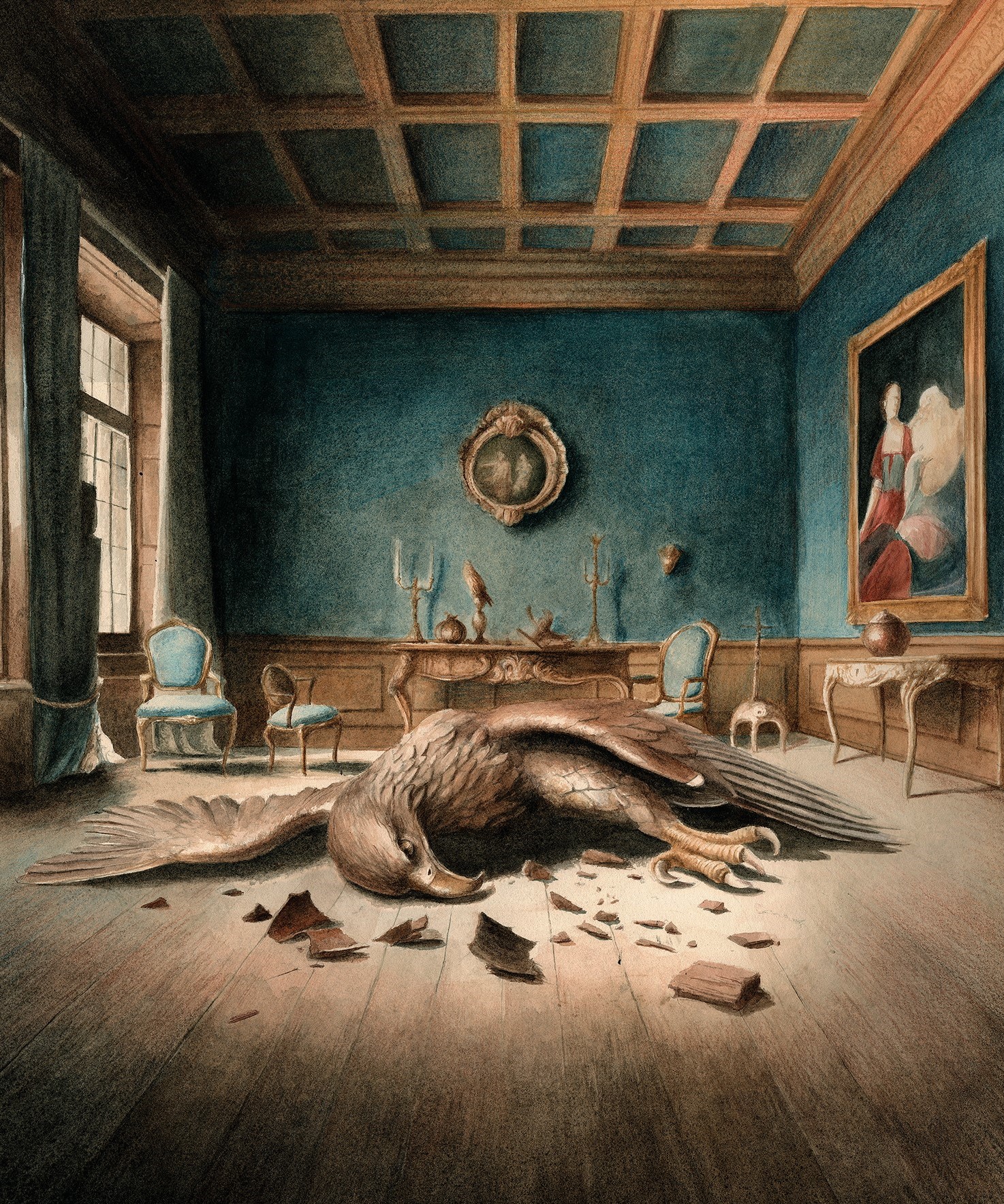
The exhibition Seasons by Maurizio Cattelan (Padua, 1960) unfolds as a visual journey through the city of Bergamo, fostering a reflection on the cyclical nature of life and history, on generations, on the rise and fall of values, and on the transformations of both the individual and society.
The exhibition title is a clear reference to what are universal signs of transition and renewal, serving as an invitation to reflect on the passage of time, but also as an exhortation to experience reality—in all its complexity and drama—through art, which does not merely represent the world, but interprets, problematizes, and transforms it.
The exhibition itinerary unfolds over four venues and features five works: Palazzo della Ragione, in Piazza Vecchia, hosts November (2023); Empire (2025), and No (2021) are exhibited at GAMeC itself on Via San Tomaso; the sculpture Bones (2025) is set up in the nearby Ex Oratorio di San Lupo, while One (2025)—a site-specific installation produced in collaboration with the City of Bergamo—stands in the historic Rotonda dei Mille, in the heart of Lower Town.
BONES (2025)
Playing a significant role in the itinerary is the image of the eagle—an animal symbolic of the mountains and of unspoiled nature—which since ancient times has served as an expression of power, domination and expansionist yearning. Set up in the Ex Oratorio di San Lupo thanks to the collaboration with Fondazione and Museo Diocesano Adriano Bernareggi, Bones challenges this symbolic tradition, presenting the eagle in its purest and most vulnerable form: its body lies on the ground, wings splayed, like an icon of defeat, an emblem of power, sovereignty and authority, evoking the crisis of imperial values and the breaking of a bond with the rhythms of nature.
The noble material from which it is produced, Michelangelo statuary marble, used for centuries to celebrate triumphs and immortal virtues, is now deployed here to crystallize a moment of fall, making it eternal and therefore inevitable.
The work was inspired by the vision of the eagle commissioned in 1939 by Dalmine—at the time a state-owned steelworks—from sculptor Giannino Castiglioni for the decoration of the stone commemorating the speech given by Benito Mussolini in 1919 to company workers on the “creative strike”: an event that would give rise to the establishment of the so-called Fasces of Combat. After the war, the eagle was moved to the garden of the company’s summer camp in Castione della Presolana, in the Seriana Valley, at the foot of the most iconic mountain in the Orobie Mountains. Having shed its bond to the regime, in the new context the eagle had come to represent the greatest values of wilderness and freedom. With the closure of the summer camp, the eagle was returned to the storage facilities of the Dalmine company.
The choice of exhibition venue is not a neutral one. The Oratorio di San Lupo has been a liminal space for centuries: between life and death, between the public and the secret, between devotion and oblivion. The title Bones plays on the tension between appearance and meaning: bones refer to death, to decomposition, but they are also what give structure, support. In this sense, the eagle is not only shot down: it is also unmasked. It is reduced to its ultimate truth, freed from the weight of ideology.
EMPIRE (2025)
The second work produced for the exhibition, presented at GAMeC, reflects on a power that never materializes and explores the tension between the ambition to build and conquer and the impossibility of acting in a context that limits all action.
A terracotta brick engraved with the word “EMPIRE”—which immediately recalls the idea of power, domination, and the building of structures—is trapped in a glass bottle, suggesting a potential act of rebellion that fails to take shape, a desire for rupture that is not fulfilled, a revolution without outcome.
The juxtaposition between the solidity of brick (a symbol of strength and power) and the fragility of glass (a symbol of transparency but also of containment) generates a profound sense of contrast. The empire evoked is a mental or political space that is unachieved, a construction that remains a dream or a threat that never comes true.
The sculpture also plays on another interpretive level: that of the message in the bottle, of a signal sent toward an uncertain future. Although potentially powerful, the message remains isolated, protected but inaccessible, a symbol of unfinished communication, of a story that will never be told or will remain unknown.
The work thus stages a conflict between strength and fragility, between will and limit, in a reflection on the failure of utopias and paralyzing inaction.
NO (2021)
The third work, exhibited in the museum’s own halls, stems from a reworking of the iconic sculpture Him (2001), in which Maurizio Cattelan depicted Adolf Hitler kneeling in prayer, his face turned upward in an ambiguous gesture amid supplication and fiction. The figure, modeled with childlike features, evokes at first glance the innocent image of a child, generating a visual and emotional short-circuit the moment the viewer recognizes the subject’s identity.
The choice to cover the face—triggered by a censorship request at an exhibition in China—is ambiguous: it is both a form of punishment and protection. Protection of the viewer from trauma, but also of the subject from judgment. Thus, No breaks the circuit of visual recognition, denying the face the chance to become an icon. The act of concealment becomes the focus of the work: the bag is not only an act of censorship but a device that shifts the focus: what is not shown becomes more disturbing than what is seen.
NOVEMBER (2024)
In the Sala delle Capriate of the Palazzo della Ragione, since 2018 the summer home of GAMeC in the heart of Bergamo Alta, is the work November: a sculpture that stimulates a reflection on our relationship with marginality, justice, and decadence, but also on the sense of freedom that, at times, the weakest and most vulnerable can embody.
Made of Michelangelo statuary marble, the sculpture depicts a homeless man lying on a bench, his pants undone, in a moment of extreme vulnerability.
The man is wetting himself, as shown by the presence of water on the floor: a detail that not only amplifies the sculpture’s dimension of realism, but also accentuates the feeling of discomfort, of distance from socially shared norms and of estrangement. Urine thus becomes the trace of an existence, of a body that continues to live albeit, at least apparently, in its most physical dimension, insinuating the idea that the gesture made by the man could potentially constitute an act of self-affirmation.
The face of the homeless man is that of Lucio, a friend and collaborator of the artist, a tribute that introduces a personal and intimate dimension to the work and an attempt, on one hand, to restore dignity to the homeless, and on the other, to showcase the universal theme of social marginality.
The choice to place the work inside Bergamo’s Palazzo della Ragione is meaningful: the large Sala delle Capriate, which once housed medieval town assemblies and was later turned into a court under the Republic of Venice, bears the weight of justice, but also of its absence, of discrimination and injustice.
The short-circuit that is inevitably creates questions our relationship with power structures, laws and values that determine who has a right to be part of society and who is relegated to the margins, being deemed “non-compliant.”
ONE (2025)
The last work in the exhibition is One, an installation conceived by Maurizio Cattelan for the Rotonda dei Mille, one of the most well-known places in Lower Bergamo.
Cattelan places a child astride Garibaldi’s shoulders, With the fingers of his right hand, the boy mimes a gun: an ambiguous gesture that oscillates between childish play and a hint of assertion, resistance, or potential rebellion, but which may also be read as an attempt to question the responsibilities of the new generations in the face of memory and the contradictions of history.
Balancing lightness and tension, One opens up to a dual perspective, both public and personal. On the one hand, it is an intervention that stimulates a confrontation with the national past; while on the other, it narrates the relationship between generations. Who is this “One?” A grandson playing on his grandfather’s shoulders? A little vandal? A rebel? Does it refer to the individuality of the single or to a unified collective force, like the Thousand led by Garibaldi? Is it therefore a new symbol of unity? Or a new generation making a mockery of old values?
In this context, Cattelan seems to suggest how important it is not to forget history, but even more to be able to reread and interpret it. The figure of Garibaldi, central to the Risorgimento and the Italian imagination, has been the subject of numerous critical rereadings. One seeks to recontextualize the monument, proposing an open reflection on what it means today to be heirs of the values and ideologies that built a nation, and invites reflection on what kind of “unity” is still possible. It hints at a coexistence made up of differences, critical memory and new potential. In this sense, the work is both monument and counter-monument, a gesture of continuity and an act of discarding.
Completing the exhibition is a communication campaign that, along with a series of street posters, also involves Bergamo’s Kilometro Rosso (“Red Kilometer”), for which the artist has devised a special—site-specific—declination of the project’s visual identity, specially designed for the portals of the famous red wall designed by Jean Nouvel.
Date
May 22, 2025
